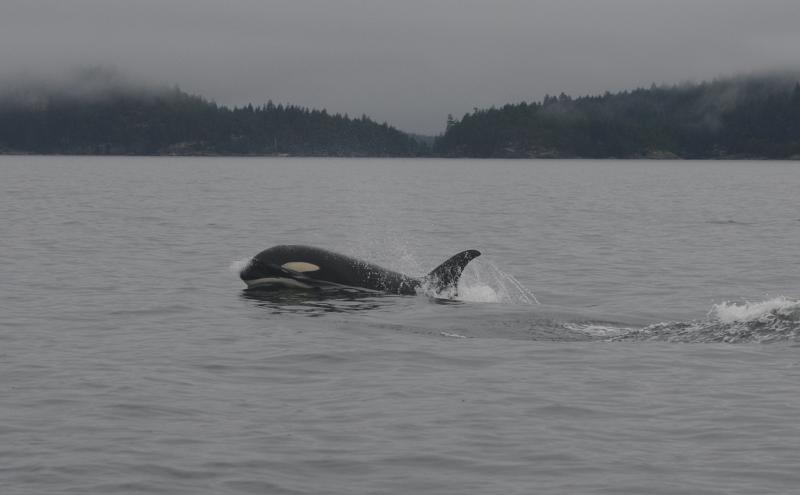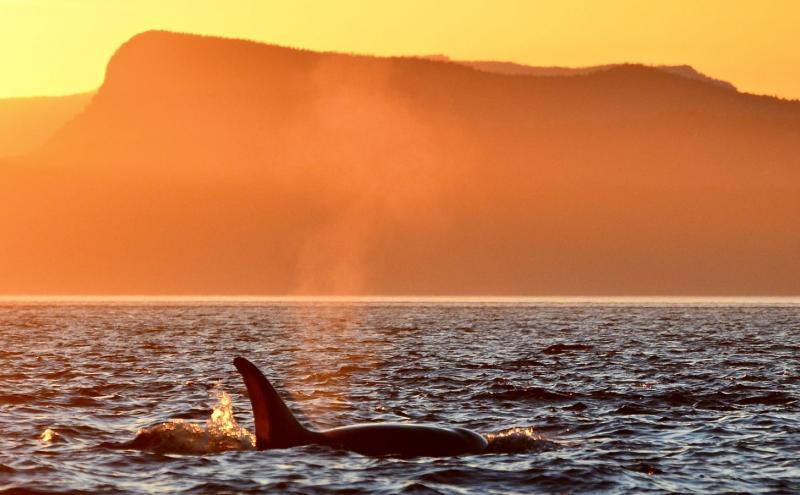
On September 19 and 20, I had the honor of serving on the International Association of Ports and Harbors delegation and joined world experts on underwater noise and energy efficiency at the International Maritime Organization (IMO) in London. This was a great opportunity to apply my expertise in marine mammals and vessel traffic to the operational and technical measures that reduce ship-induced greenhouse gas emissions and reduce underwater radiated noise.
Maritime shipping accounts for three percent of global greenhouse gas emissions and is the main contributor to underwater noise in the ocean. The underwater noise of a cargo vessel at top speed is louder than a jet engine at takeoff. And since sound travels four times faster in water than air, the noise from one ship — let alone many — can have far-reaching impacts.
The IMO, a body of 175 member states and other nonstate observers, creates global safety and environmental standards for ships. With leadership from Canada and the United States, the IMO adopted revised voluntary guidelines for ships to reduce their underwater radiated noise — noise that is created by a ship moving through the water, its propeller, and the machinery onboard — that at certain levels can negatively impact the ability of acoustically sensitive marine life to feed and communicate.
While there are tradeoffs associated with modifications to propeller design, fortunately there are measures ship owners and operator can take to reduce their underwater noise levels and make ships more fuel-efficient, thereby reducing their overall emissions. These include slowing down and cleaning the props and hulls of ships, which reduces the strain on engines and associated underwater- and air-emissions.
Reducing underwater noise impacts to marine life is important to the Port of Seattle, the Northwest Seaport Alliance, and the broader Puget Sound region. Our operations utilize the ecologically rich waters of the Salish Sea, where some marine life, including important salmon populations and endangered Southern Resident killer whales, are already threatened by extinction. These species are also essential to the cultural and economic fabric of our indigenous tribes.
So what can ports do to help implement the IMO’s standards for ships? The guidelines to reduce noise include suggestions for ports to measure underwater noise and provide incentives for ships to reduce their noise output.
The Port of Seattle continues to explore incentives for environmental priorities through a variety of programs we have recently implemented. As part of our Green Marine certification, the Port adopted an Underwater Noise Mitigation and Management Plan that includes monitoring underwater noise. We are also a partner in Washington Maritime Blue’s Quiet Sound program, which I had a role in establishing as part of the Vessel Working Group to Governor Inslee’s Orca Task Force, modeled after the Port of Vancouver’s successful ECHO Program. Both programs have piloted vessel operations measures to reduce speed and underwater noise. Last year’s voluntary speed trial in Puget Sound had over 50 percent participation by large vessels and reduced sound intensity by 48 percent. We are looking forward to another successful, quieter winter for Southern Resident killer whales from the voluntary speed trial begun this month.
We also have a responsibility to reduce greenhouse gas emissions. The Port has initiatives in place that do both. We offer shore power connections so large cruise vessels can run on clean electricity while at berth, allowing them to shut down engines and reducing impacts on the climate and the air quality of near-port communities. We are also working to expand shore power to our third cruise berth that, when completed in 2024, will make our cruise terminals 100 percent shore power capable.
Cargo owners also have the opportunity to influence this effort. Companies like Amazon have already notified ocean carriers that if they want to carry their goods, they will have to use low-emission vessels. No sooner after that announcement was made, Maersk, one of the world’s largest ocean carriers, began building ships capable of running on methane. This is far faster than could be achieved by the IMO, a division of the United Nations, which requires consensus of countries from around the world.
The workshop in London last month was an excellent opportunity to hear about the latest efforts to reduce our impacts on the climate, air quality, and marine life on which we all depend. A report on the outcomes will work its way through the IMO via the Ship Design and Construction (SDC) Subcommittee in January 2024 for discussion with a view to providing recommendations on next steps to the Marine Environment Protection Committee (MEPC) in April 2024.
One suggestion I made that will be added to the recommendations was to include the reduction of underwater noise among the goals of green shipping corridors in which specific trade routes will exercise practices to reduce greenhouse gas emissions. Unless intentional efforts are made to address carbon and noise, we will only be addressing one of the major impacts of marine shipping on the global oceans. That’s why I made the recommendation; we look to create Quiet Green Corridors.
The Port has an opportunity to lead in this effort through our participation in the development of green shipping corridors along the routes cruise ships take to Alaska and those that container ships take between Korea and our cargo terminals in Seattle and Tacoma.
Among the global experts, the Port has excellent partners in government and industry with the Pacific Northwest, the West Coast, and Korea leading the way. I look forward to continuing to help the Port lead efforts to reduce the impacts of maritime shipping through the Salish Sea to Alaska and across the Pacific Ocean so that commerce and killer whales can coexist.
Subscribe to email updates from Commissioner Felleman
Top photo caption: Commissioner Fred Felleman at the International Maritime Organization’s Workshop on Underwater Noise and Energy Efficiency of Ships in London





